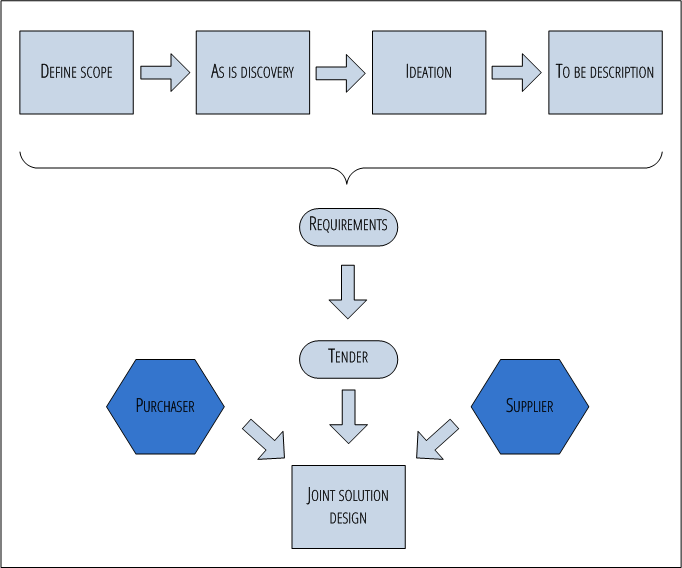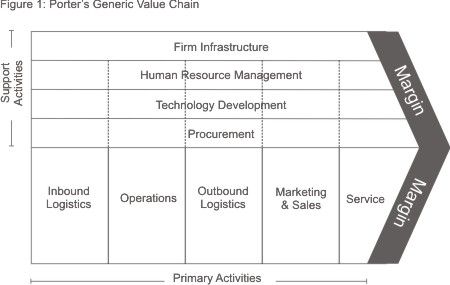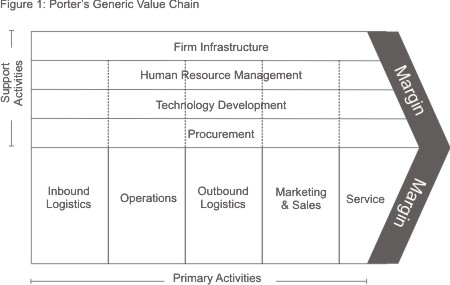Managing the co-design process – Techniques to get it right when collaborating with suppliers
What is co-design?
A number of terms have recently cropped up that reflect a new way of developing IT solutions – co-design, joint solutioning, as a service etc. Fundamentally they are all trying to fix a common problem and need to be properly managed to achieve the outcomes expected.
The premise behind the approach is that the traditional way that businesses have specified IT systems has been inefficient. It is quoted that 60% of code in IT applications is never exercised. The systems that have been built have high complexity, are difficult to upgrade and consequently provide a lower return on investment.
The new co-design process makes the reasonable assumption that the suppliers of these systems have valuable experience in implementing solutions and can use this experience to recommend “best practice”. Organisations procuring these solutions should merge the best practice recommendations with their own requirements in a collaborative supplier / buyer engagement.
The expected outcome is less customization, an easier upgrade path as technology evolves and better ability for organisations to source services in a competitive market environment.
Take the example of a business that wants to implement a collaboration system – they could try to specify the sort of interactions they expect to be of value; and then specify a system. Alternatively they could look at the standard products like Yammer, Google Hangout and Podio. These require some customization, but the fundamental collaboration approach is baked into them. With co-design the products bring along approaches that are known to work well.
If we deconstruct the value proposition of co-design, it has the following components:
- Best practice processes and approaches. They are known to work well – other customers are prepared to pay for them;
- Economies of scale, defraying development costs over a large number of customers;
- Factory approach to maintenance, with specialist teams performing repeatable complex tasks with high quality and low cost; and
- Simpler lifecycle upgrade path, with the solution developed without customization.
There are of course a number of challenges with the approach:
- The supplier / product selection becomes more critical. There is less opportunity to change once the purchase is made and the supplier drivers may not align with the purchaser;
- There will be valid mandatory requirements which must be accommodated for the solution to be effective. These must be distinguished from the “nice to have”; and
- The outcomes can be hard to specify and new approaches to service performance management must be implemented.
Co-design procurement
In order to develop a successful co-design relationship, it is critical to understand where this differs from traditional approaches. It has long been common practice to involve the supplier in the architecture and detailed design when implementing commercial off the shelf (COTS) products. With co-design, the supplier is engaged with less detailed requirements that are often specified as performance outcomes.
The complete end to end relationship with the supplier needs to be reworked. A request for information step based on the strategic intent is often the first step. This not only identifies likely suppliers, it also will demonstrate the breadth of opinion about what constitutes best practice. It is not unusual to cull the supplier list at this stage – the co-design approach involves a heavy investment in the procurement process from both the purchaser and supplier.
A standard procurement approach is shown in Figure 1
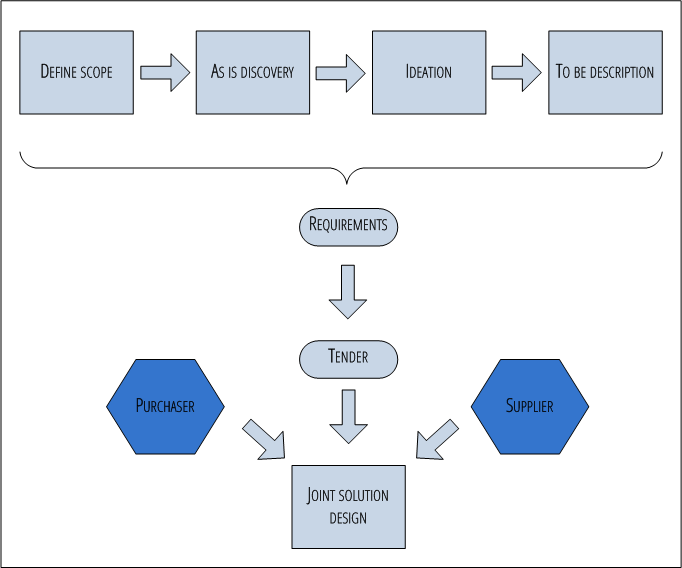 Figure 1 Traditional procurement
Figure 1 Traditional procurement
In this scenario, the purchaser will do sufficient discovery and definition of a to be state to create robust requirements in a tender. These requirements provide the basis for an evaluation of responses and selection of supplier. Once contracted, the supplier may perform additional analysis to develop more detailed requirements such as technical architecture, use case models and information models.
The procurement process of the co-design approach is shown in Figure 2
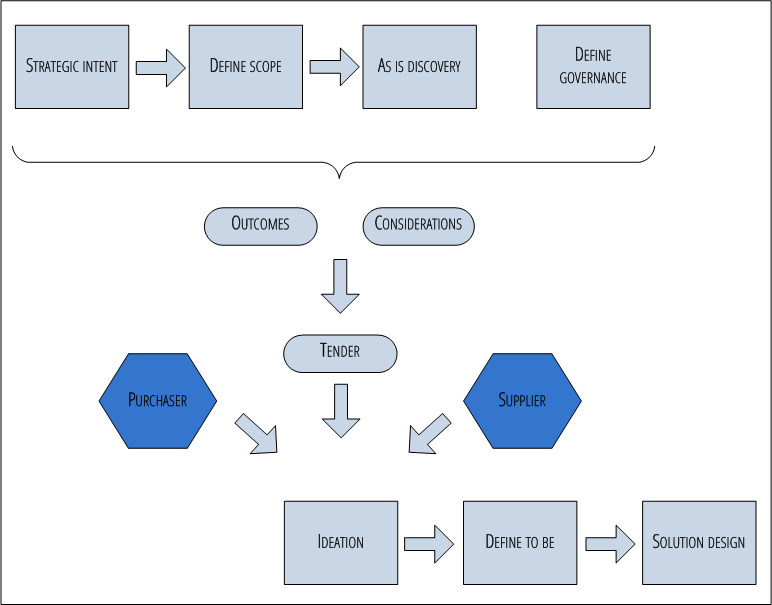 Figure 2 Co-design procurement
Figure 2 Co-design procurement
The specification in the tender does not have the detailed requirements of traditional procurement. It will include details of current state, the outcomes that the purchaser is trying to achieve and supplier governance processes that establish how performance will be controlled.
Given that a co-design tender has less constraint, it is often difficult for suppliers to develop a response based on the tender alone. A joint solutioning workshop is common with a shortlisted group of suppliers prior to final proposal.
Once a supplier is selected, the purchaser and supplier work collaboratively to define the to be solution. The performance outcomes in the tender should drive the supplier to propose an industry standard solution wherever feasible, reducing customization and complexity.
Requirements management
A key challenge through the co-design process is in managing requirements. The tender will specify outcomes and considerations, which need to be translated into contractual commitments through the process. It is important that mandatory requirements of the purchaser are identified and actioned. It is also necessary for the purchaser to accept the requirements of the supplier. These could for example include a need for the business users to change their processes.
A well run co-design procurement creates linkages from the strategic intent to the detail of the solution. The linkages are best written into the procurement process as a set of key performance indicators developed around a balanced scorecard.
Requirements that cannot be traced to strategic intent should be discarded, and valid requirements should be verified that they will deliver on the expected outcomes.
One approach that has been successfully used is to structure the requirements traceability around business process. This provides a vehicle to identify and classify business and supplier requirements. The traceability tool is used through early market engagement, tender, workshops, evaluation, implementation and supplier governance.
To conclude, co-design is an approach to procurement that offers much promise. As shown in this article, it means that the procurement process changes significantly as does the analysis and specification of requirements. There are many traps for the unwary and it pays to engage help from organizations who have a track record in co-design procurement.
Don’t forget to leave your comments below.
